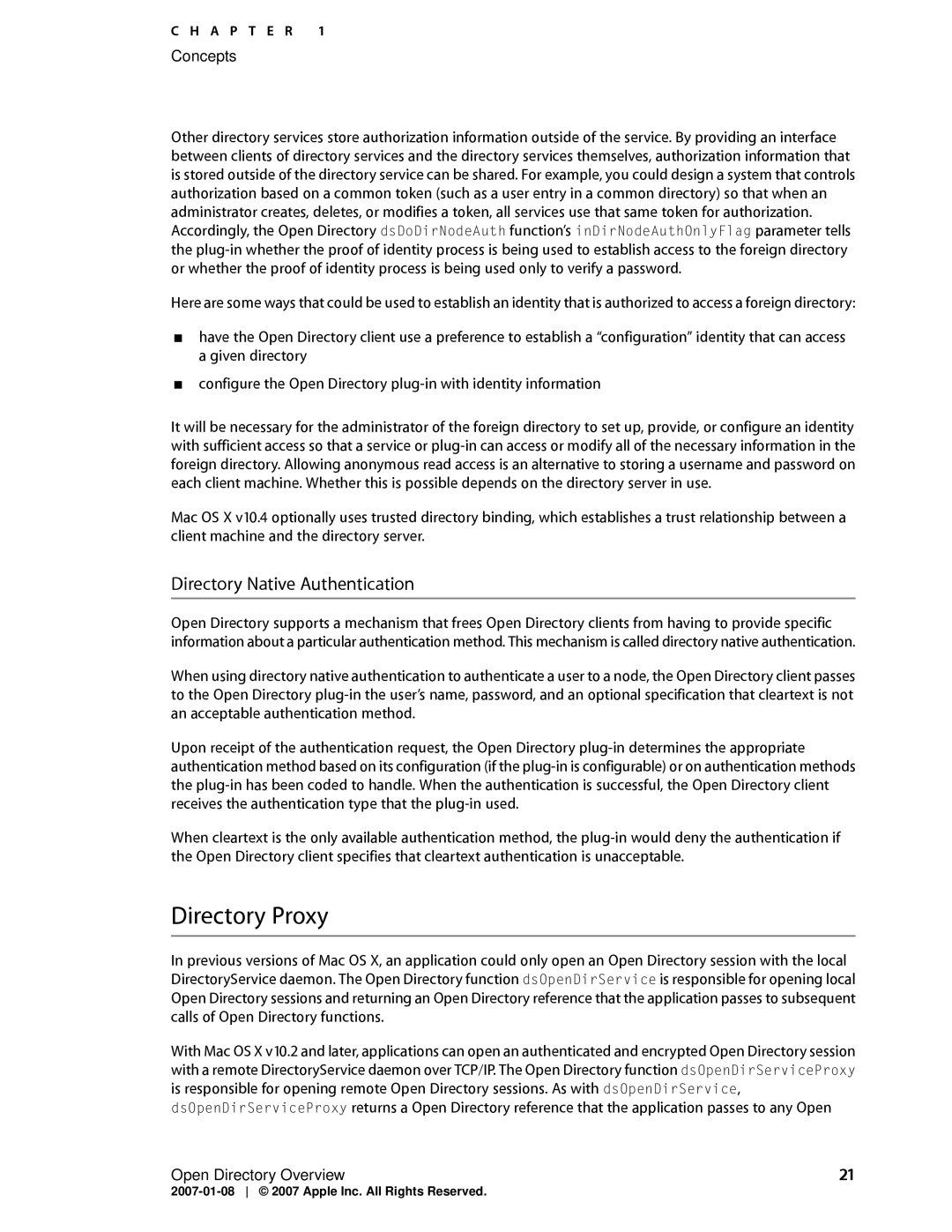
C H A P T E R 1
Concepts
Other directory services store authorization information outside of the service. By providing an interface between clients of directory services and the directory services themselves, authorization information that is stored outside of the directory service can be shared. For example, you could design a system that controls authorization based on a common token (such as a user entry in a common directory) so that when an administrator creates, deletes, or modifies a token, all services use that same token for authorization. Accordingly, the Open Directory dsDoDirNodeAuth function’s inDirNodeAuthOnlyFlag parameter tells the
Here are some ways that could be used to establish an identity that is authorized to access a foreign directory:
■have the Open Directory client use a preference to establish a “configuration” identity that can access a given directory
■configure the Open Directory
It will be necessary for the administrator of the foreign directory to set up, provide, or configure an identity with sufficient access so that a service or
Mac OS X v10.4 optionally uses trusted directory binding, which establishes a trust relationship between a client machine and the directory server.
Directory Native Authentication
Open Directory supports a mechanism that frees Open Directory clients from having to provide specific information about a particular authentication method. This mechanism is called directory native authentication.
When using directory native authentication to authenticate a user to a node, the Open Directory client passes to the Open Directory
Upon receipt of the authentication request, the Open Directory
When cleartext is the only available authentication method, the
Directory Proxy
In previous versions of Mac OS X, an application could only open an Open Directory session with the local DirectoryService daemon. The Open Directory function dsOpenDirService is responsible for opening local Open Directory sessions and returning an Open Directory reference that the application passes to subsequent calls of Open Directory functions.
With Mac OS X v10.2 and later, applications can open an authenticated and encrypted Open Directory session with a remote DirectoryService daemon over TCP/IP. The Open Directory function dsOpenDirServiceProxy is responsible for opening remote Open Directory sessions. As with dsOpenDirService, dsOpenDirServiceProxy returns a Open Directory reference that the application passes to any Open
Open Directory Overview | 21 |
